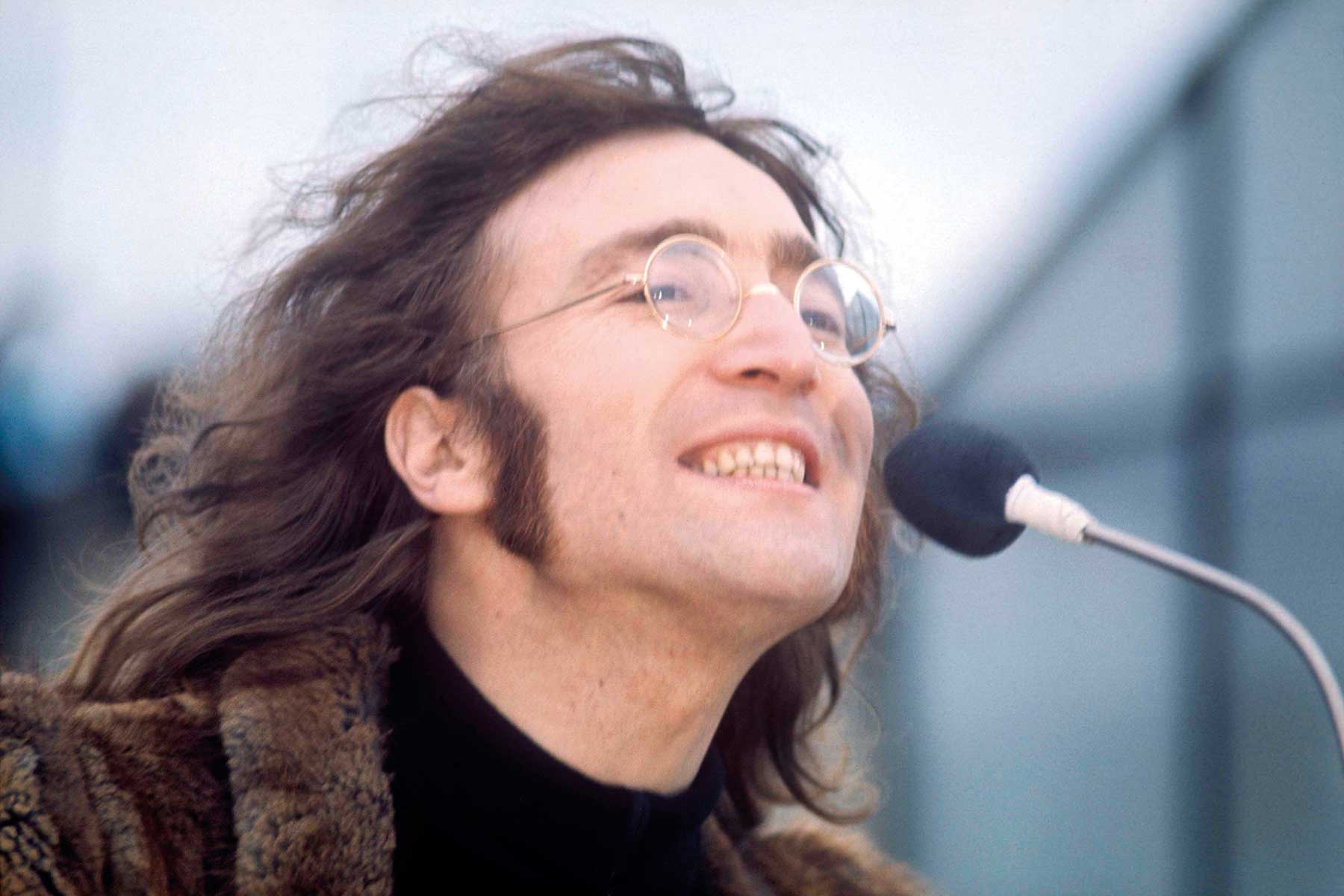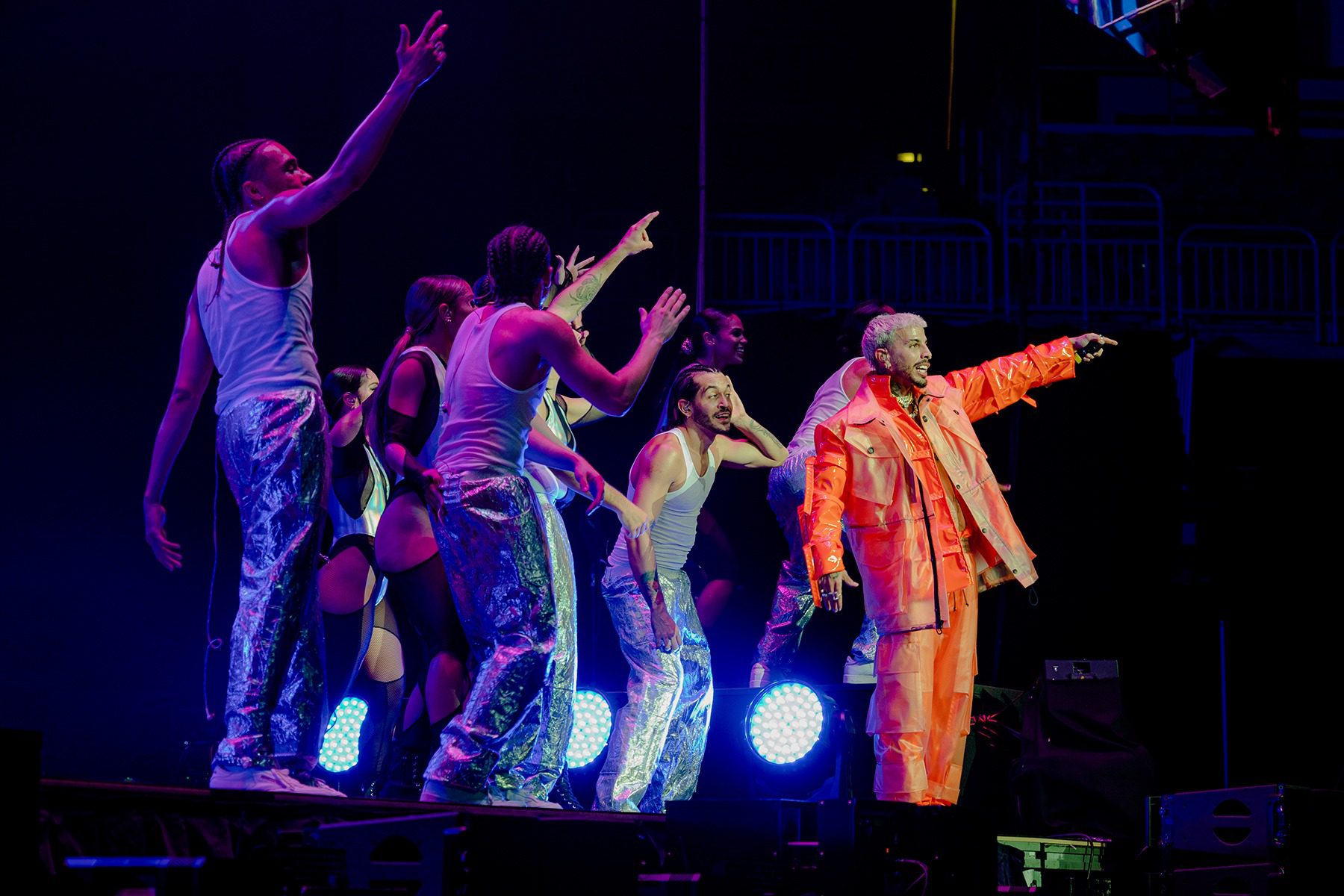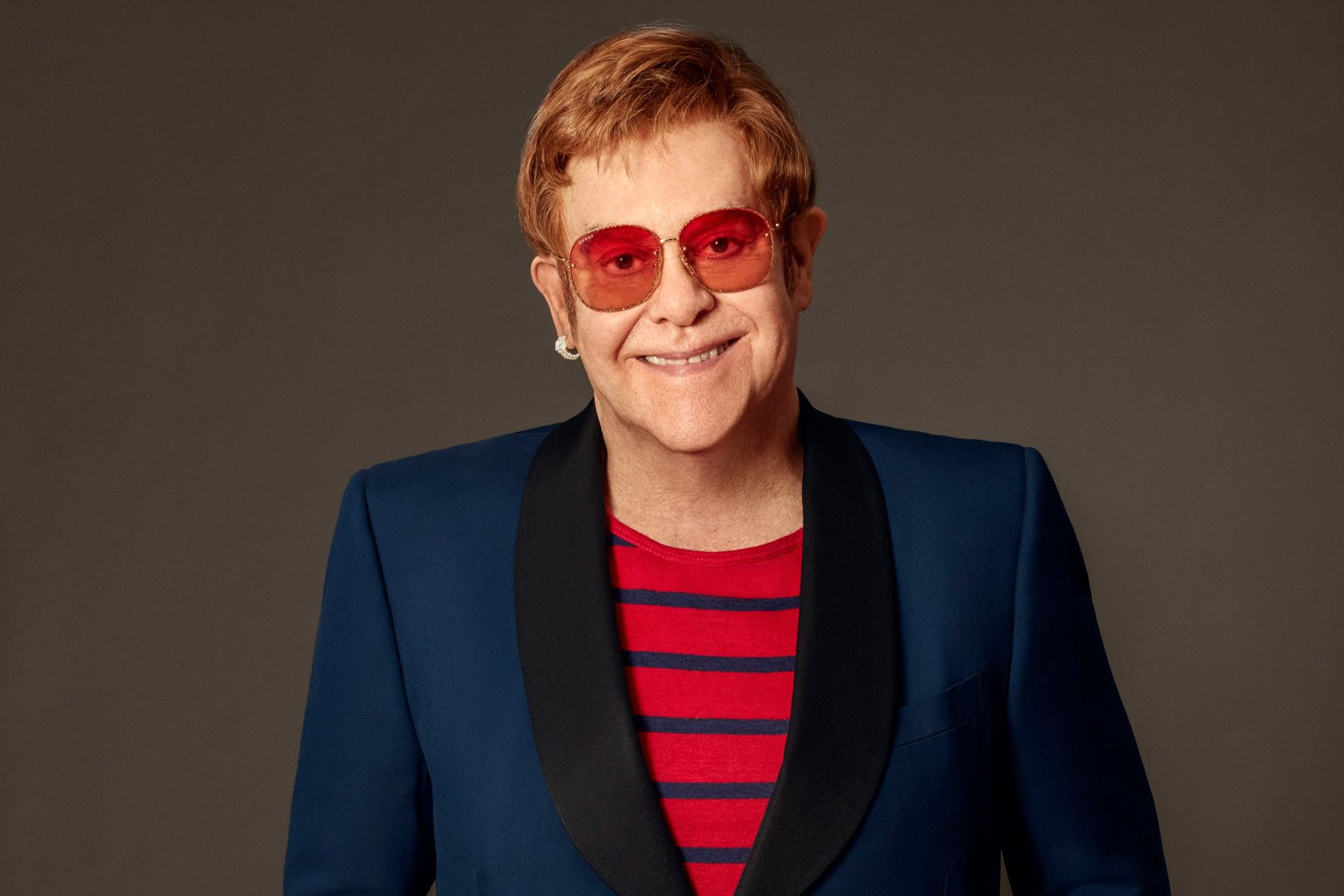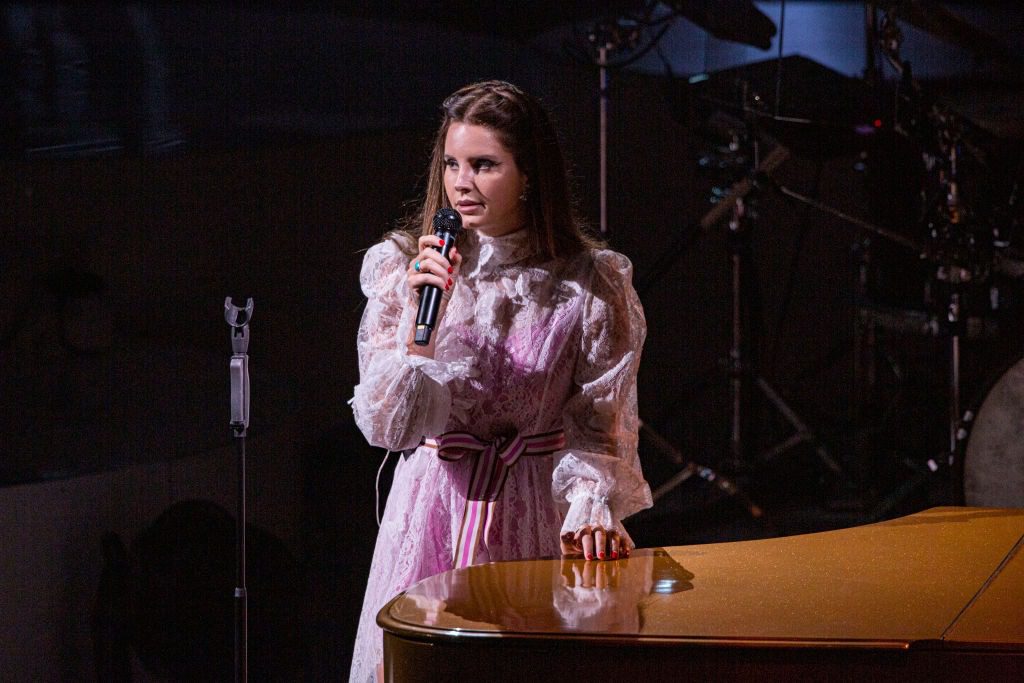
Why ‘Don’t Let Me Down’ Is the Whole Beatles Story in One Song
Of all the revelations on the Beatles’ new Let It Be box set, the biggest is the song that didn’t even make the original album. “Don’t Let Me Down” is John Lennon’s raw love ballad to Yoko Ono, much like “Two of Us,” Paul McCartney’s song for Linda. John sounds terrified of the emotional leaps he’s taking, but he leans on the other Beatles to back him up and carry him through the song. You can hear the band develop “Don’t Let Me Down” over the course of the box, until it comes to feel like the whole Beatles story in one song: a map to the long and winding road of their messy, doomed, inescapable friendship.
The Let It Be box is the companion to the eagerly awaited new docuseries Get Back from director Peter Jackson, which debuts on Nov. 25 on Disney Plus. And like the movie, the box is full of moments that demolish the cliche that the Beatles hated one another. “The whole point of it is communication,” John says in the brand-new Get Back book, full of photos and dialogue from the sessions. “We’ve got a chance to smile at people, like ‘All You Need Is Love.’ So that’s me incentive for doing it.” Working on “Don’t Let Me Down,” the other Beatles note how “corny” it is. John doesn’t care. “I think the words should be corny. Because there’s no clever words in it.”
blogherads.adq.push(function () {
blogherads
.defineSlot( ‘medrec’, ‘gpt-dsk-tab-article-inbody1-uid0’ )
.setTargeting( ‘pos’, [“mid-article”,”mid”,”in-article1″,”mid-article1″] )
.setSubAdUnitPath(“music//article//inbody1”)
.addSize([[300,250],[620,350],[2,2],[3,3],[2,4],[4,2],[640,250]])
;
});
John wasn’t wrong — the song is totally, defiantly, shamelessly corny, because it’s a confession of how he needs his fellow Beatles as much as he needs Yoko. That’s why “Don’t Let Me Down” is the heart of Let It Be. Remixed by Giles Martin and Sam Okell, it sounds realer than ever.
So why wasn’t it on the original album? Good question. Nobody knows why Phil Spector made that call, but even by Spector standards, it’s bizarre. There was plenty of room on a 35-minute LP, even with filler like “Dig It” or “I Me Mine.” Fans over the years discovered “Don’t Let Me Down” on the Blue Album, a bit out of place between “Get Back” and “The Ballad of John and Yoko.”
It’s a rock & roll ballad rooted in the Fifties tunes that originally brought John Lennon and Paul McCartney together in Liverpool. All their lives, John and Paul loved to sing these songs — sometimes it was the only way they had to communicate. So in the crisis of the White Album sessions, when Ringo quit the band for two weeks, the first song they cut without him was “Dear Prudence,” a Buddy Holly tribute transposed to a Sixties ashram. And when John and Paul met up in the Seventies after three years of not seeing each other — their final moment together in a studio — they sang the oldie “Stand By Me.” “Don’t Let Me Down” is part of that story. As always, John and Paul sang those rock & roll oldies to express the emotions they couldn’t share any other way.
“Don’t Let Me Down” became a theme song for the project, a song they kept playing from the very first day to the very last, right up to the final Beatles rooftop concert on Jan. 30, 1969. It was one of the first tunes released, as the B side to the “Get Back” single. John brought it into the first session at Twickenham Film Studios, on Jan. 2, alternating it with another Fifties-style ballad, “Sun King.” As he joked, “Every song’s got the same chords!” George replied, “I noticed. Mine too.”
But the song really took off when they moved the sessions to Apple. Their first day there, George bumped into keyboardist Billy Preston in the lobby, and recruited him on the spot. Billy jammed with the band all afternoon, raising everyone’s spirits. “Don’t Let Me Down” was the very first song he played with them. When John called for a solo — “take it!” — Preston added his distinctive electric keyboards, while John did some Martin Luther King-inspired preaching. (“I had a dream this afternoon!”) The Fabs couldn’t hide their enthusiasm. “I say ‘take it,’ and he takes it!” John said. “You’re giving us a lift, Bill!”
The Let It Be box has multiple performances of “Don’t Let Me Down,” and each one tells a different part of the story. There’s the lost Glyn Johns mix of Get Back, assembled in 1969 but never heard until now. Johns compiled the session tapes into a raw live documentary, full of false starts and mistakes. It was exactly what the Beatles asked for, but Johns did too good a job — the Beatles were horrified by how clumsy they sounded with their knickers down.
blogherads.adq.push(function () {
blogherads
.defineSlot( ‘medrec’, ‘gpt-dsk-tab-article-inbody2-uid1’ )
.setTargeting( ‘pos’, [“mid-article2″,”mid”,”in-article2″,”mid-article”] )
.setSubAdUnitPath(“music//article//inbody2”)
.addSize([[300,250],[300,251],[620,350],[2,4],[4,2],[3,3]])
.setLazyLoadMultiplier(2)
;
});
But the centerpiece of the Glyn Johns mix is the 11-minute suite, segueing “Dig a Pony,” “Don’t Let Me Down,” and “I’ve Got a Feeling” into one long song. This “Don’t Let Me Down” is rough and ready, beginning with Paul saying “Do your thing, man,” and John snickering, “I’m doing it all the time, I can’t keep off it!” John and Paul trade off vocals. (“She done me good.” “Yes, she did!” “Yeah, she done!” “One more time!”) But the touching moment is the intro, when John asks Ringo for a little extra in the opening cymbal crash. “Do a nice big kssssh for me, you know? To give me the courage to come screaming in.”
The original single version, the B side of “Get Back,” is looser and jokier. John introduces it as “Don’t Let Me Down the Road Again Blues, Short Fat Fannie You’re My Desire.” George scoffs, “Come on, boys.” The Beatles played it twice on the rooftop — the first time, John spaced the words to the second verse, so he ad-libbed some gibberish syllables. In the next attempt, he screwed up the first verse. (The first version is on the box; both are in the movie.) You can hear how frightful it was for John to sing his own song, facing up to doubts and fears he was used to hiding away. As with the first song he brought in to the Rubber Soul sessions, “Norwegian Wood,” he got rattled at how much he revealed his vulnerability.
“Don’t Let Me Down” is for Yoko, just as “Two of Us” is for Linda. But both songs also sound like love songs to each other. When Paul wrote “Two of Us,” he wrote at the top of his lyric sheet, “Another Quarrymen Original.” And in the same way, “Don’t Let Me Down” is a song John wrote to sing with Paul. Both songs depend on the other Beatles to do heavy lifting. And Paul excels in “Don’t Let Me Down,” just as John excels in “Two of Us” — in the “Take 4” version on the box, he sings even harder, bluesier, in Paul’s “we’re going home” hook.
The same kind of dialogue is going on in “Oh! Darling,” one of the box’s best outtakes. Paul and John turn it into a doo-wop duet, playing off each other, making a fond joke out of their call-and-response. When Paul wails, “Believe me when I tell you,” John yells, “Oh, I do!” They turn it into a celebration of their personal and musical history — always linked for these two. It was easier to share these affectionate moments in a song.
Meanwhile, George Harrison was understandably outraged to find himself on the outside. The back-to-basics concept of Get Back meant there was no room for his complex, sensitive new songs. (As we all learned from the gorgeous new All Things Must Pass box, George was cranking out more great songs than he could fit on a triple album.) The Let It Be box has a full-band version of “All Things Must Pass” where George plays the diplomat, humbly telling his mates, “If there’s people joining in, I’d appreciate it.” And just think: Harry Styles was seen just wearing an “All Things Must Pass” shirt around New York City the weekend this album came out, surely some kind of cosmic omen.
blogherads.adq.push(function () {
blogherads
.defineSlot( ‘medrec’, ‘gpt-dsk-tab-inbodyX-uid2’ )
.setTargeting( ‘pos’, [“mid”,”mid-articleX”,”in-articleX”,”mid-article”] )
.setSubAdUnitPath(“music//article//inbodyX”)
.addSize([[300,250],[300,251],[3,3],[620,350]])
.setLazyLoadMultiplier(2)
;
});
Songs like “Don’t Let Me Down” couldn’t keep the Beatles together — but at least they could give an honest account of what that friendship meant, what it was about, and why it mattered. It’s a song that shows you why they believed this friendship was worth fighting for. And it also tells the story of how much inspired music they could wrench out of each other, even at the lowest depths.
In a way, “Don’t Let Me Down” got a sequel five years later, when John and Paul hooked up in an L.A. studio in 1974, their first meeting in three years. (John and Yoko were separated, so Yoko sent Paul out there to give him a talking-to about how John could win her back. Yep, just another weird chapter in the story of this weird friendship.) They had a late-night jam session, with Harry Nilsson, Stevie Wonder, and others. Ringo and Keith Moon just left, so Paul plays Ringo’s drums. You can hear in their voices they’re a little rusty; you can also hear they’re terrified. But as always, they communicate through the music. “Somebody think of a friggin’ song,” John yells. “It’s gotta be a song from the Fifties, or no later than ’63, or we ain’t gonna know it!”
The song John strikes up on guitar is “Stand By Me,” a pledge of eternal devotion. He and Paul sing it together, calling the words “stand by me” to each other. It’s a poignant duet, to say the least, even if they’re drunk and out of tune. (John: “I won’t.” Paul: “No, I won’t.” John: “Be afraid.” Paul: “No, I won’t be afraid.”) John invites Stevie Wonder to jump in — “Stevie might get on it if he’s got a mic!” But Stevie holds back, because he knows exactly what’s going on. This moment is about John and Paul.
That’s how “Don’t Let Me Down” feels. It’s the sound of these boys trying to reach across their differences to find a moment of connection. For all four Beatles, it’s a song that unites them when nothing else can. It’s a marvel they could make music this powerful in a time of crisis. John faces down all the emotions that terrify him the most — but he leans on his brothers to give him the courage to come screaming in.
blogherads.adq.push(function () {
blogherads
.defineSlot( ‘medrec’, ‘gpt-dsk-tab-inbodyX-uid3’ )
.setTargeting( ‘pos’, [“mid”,”mid-articleX”,”in-articleX”,”mid-article”] )
.setSubAdUnitPath(“music//article//inbodyX”)
.addSize([[300,250],[300,251],[3,3],[620,350]])
.setLazyLoadMultiplier(2)
;
});




